How To Test Your Water Quality at Home in 5 Steps
Testing your home's drinking water can identify a variety of contaminants that may compromise your family's health. Some kits use strips with quick results, though these might not be able to detect as many elements, compounds and microbes as tests that involve sending samples to laboratories.
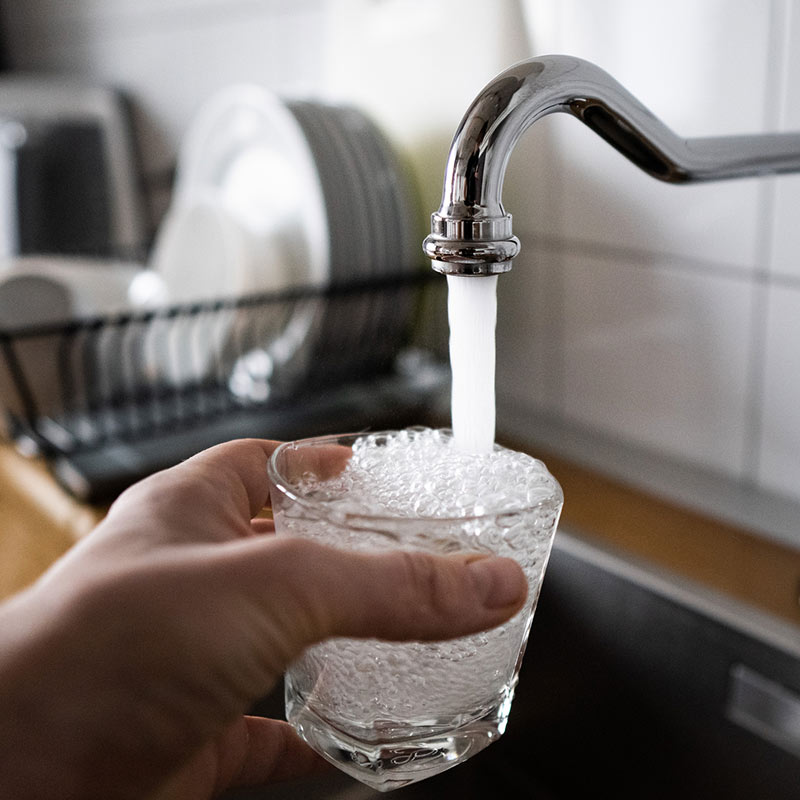
Testing Your Water Quality
Testing your home’s drinking water can potentially reveal the presence of contaminants that may risk your family’s safety. A variety of at-home water testing kits are available to consumers.
Some tests may be limited in the types of contaminants they can detect. Others may require you to send your water samples to laboratories to test for a broad spectrum of factors.
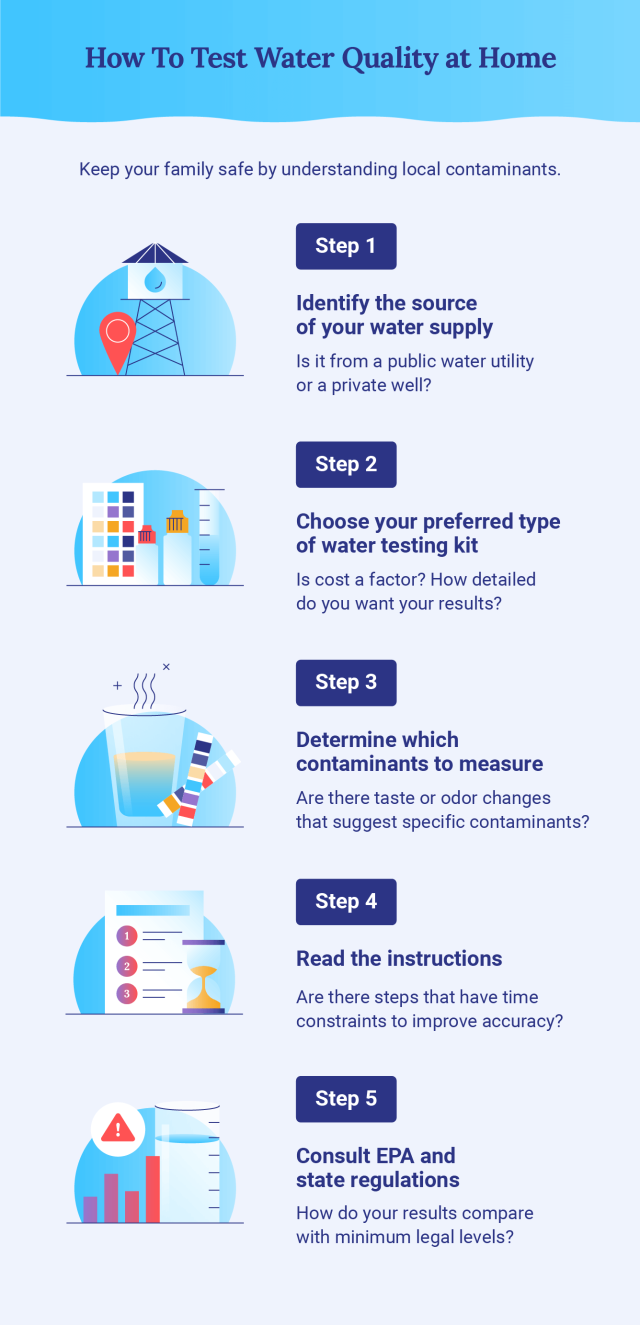
These five steps can help guide you through the process of testing your water quality at home. Whichever method you choose, be sure to follow the instructions to achieve the best results.
1. Know Your Water Source
The key difference in water sources people should identify is if their water comes from a public utility or a private well. Responsibilities for water safety vary depending on the source.
The EPA and individual states oversee public water supplies that provide drinking water to 90% of Americans. The EPA estimates private wells supply drinking water to more than 23 million U.S. households.
- Municipal water systems must adhere to the minimum legal limits the Environmental Protection Agency has set for more than 90 contaminants.
- Private well owners are fully responsible for the safety of their water supply and are encouraged to test their water annually.
Because the majority of people in the U.S. receive their drinking water through their local municipality, most people are provided with an annual Consumer Confidence Report detailing water quality. Community water systems must follow EPA guidelines for water quality. Homeowners concerned about possible water contamination can request testing information from their water provider or conduct their own tests with at-home kits or via samples sent to a lab.
Based on the difference in regulations, people with private well water may want to choose more comprehensive water testing kits. Laboratories may also send trained technicians to collect samples. The EPA recommends people, “Ask if this service is available, since you may obtain better samples and more reliable test results.”
2. Identify the Best Method for Your Home
The number of water testing kits available on the market can feel overwhelming. The quantity and type of contaminants each test measures also varies.
Some provide results quickly in your home while others must be mailed off to certified laboratories for extensive testing for more accurate results. Your budget and desired precision level of results will help you identify which of these options is right for you.
- Test Strips: Typically the most budget-friendly option, test strips produce quick results. Some brands may only test for one specific contaminant or for up to 20 different contaminants.
- Color Disk Powder Kits: Similar to a test strip but more expensive, powder kits instruct you to add drops of your water sample to a small jar or test tube containing a powder reagent.
- Laboratory Testing: Though the most expensive option, the most accurate and thorough way to test your water is to obtain a kit from an EPA- or state-certified laboratory. Some can test for more than 200 different types of contaminants.
Let your concerns about your local drinking water determine which type of kit best suits your needs. Note that most of these kits are intended for one-time use.
3. Test for Specific Contaminants
How do you know which chemicals or biological contaminants to test for in your drinking water? Both your water supplier’s CCR and the Environmental Working Group’s Tap Water Database can provide a glimpse into contaminants that may have recently been identified in your water.
The color and smell of your water may also indicate the presence of potential contaminants. Lead contamination from pipe corrosion is common, and was a primary cause of extensive health issues during the Flint water crisis. The water’s metallic taste was one of the first signs for Flint residents that their water was contaminated.
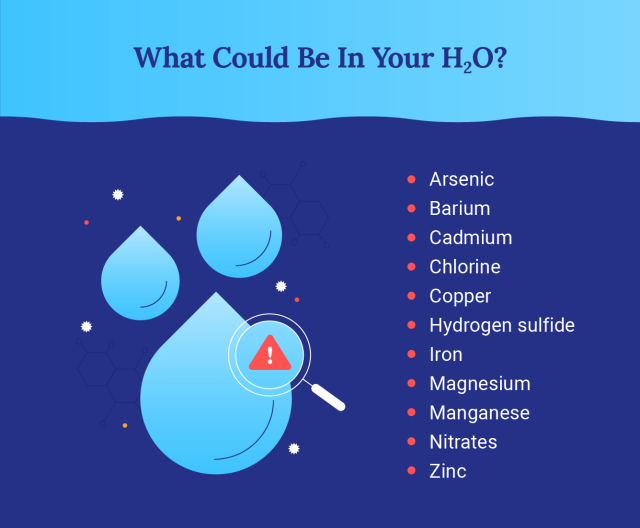
Public incidents of mass contamination can also occur. It’s important to identify in coverage of these types of incidents what specific chemicals and compounds may be involved. Knowing what compounds, elements and microbes may be involved in a spill, accident or other event can help you determine what testing is needed.
For example, a toxic chemical spill as a result of the 2023 train derailment in Ohio may have impacted private drinking wells. This rail accident released more than 1 million gallons of dangerous chemicals into local waterways and groundwater.
4. Follow Directions to Ensure Accuracy
Read the instructions that come with your water testing kit completely before beginning your test to increase the likelihood of accurate results. Wash your hands before beginning the test and have a timer ready for monitoring your test results.
5. Consult EPA and State Guidelines
The EPA created legal standards for the United States, known as the National Primary Drinking Water Regulations. They dictate acceptable contamination levels of more than 90 different potential contaminants. Public water utilities must ensure drinking water meets regulations and they can serve as a baseline for private well owners.
If drinking water contains concentrations of lead that exceed 15 parts per billion in more than 10% of the consumer taps sampled, the public water system is required to immediately take action to control further corrosion of lead-based pipes. If private well owners find high levels of lead in their water, they should take immediate action as well.
The Safe Drinking Water Act enables states to establish their own regulations for water quality control in their jurisdictions. The state-level guidelines are often more strict than the EPA, as they use the National Primary Drinking Water Regulations as the minimum for creating their own standards.
Water Quality FAQ
Because of the potential serious health risks of a number of contaminants, understanding how to test your water quality and achieve accurate results is critical. These frequently asked questions address several additional key points.
How Often Should You Test Water Quality?
The Centers for Disease Control and Prevention recommend that well water be tested once a year for coliform bacteria, dissolved solids, nitrates and pH levels. Also test your well water if there have been any issues with or changes to your well or the land surrounding it.
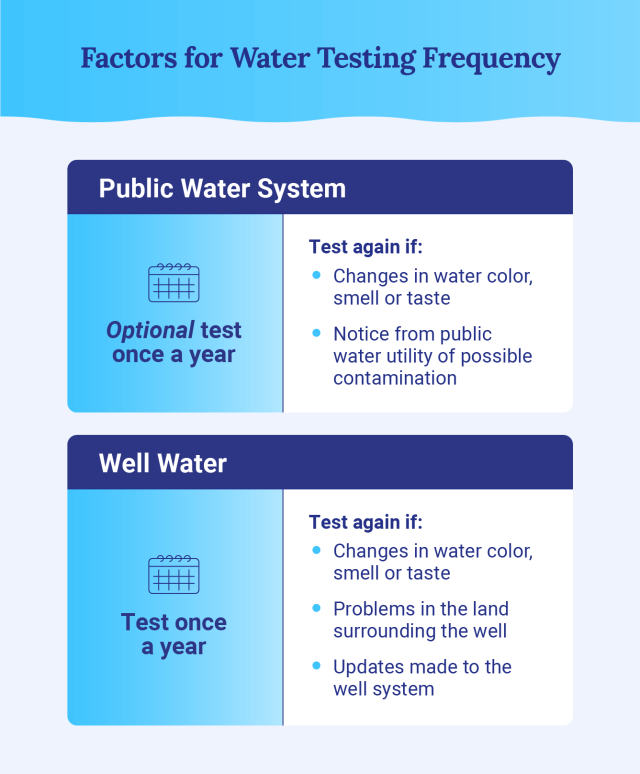
Community water systems test the drinking water supply consistently, following timelines established in the Safe Drinking Water Act. At-home water quality testing is optional for water sourced from a public utility.
If you detect changes in your water’s color, smell or taste, consider testing. Watch for communications from your water company about contamination concerns in your area.
What Are Symptoms of Exposure to Contaminated Water?
Soldiers and their families who lived and worked at Camp Lejeune, a Marine Corps base in North Carolina, between 1953 and 1987 were exposed to contaminated water, for example. Of the approximately 1 million people potentially exposed during that time, many developed severe illnesses, including cancer, Parkinson’s disease and reproductive issues.
Physical symptoms of contamination can help determine what could be in your water. The chart below lists some common water contaminants and the signs of their presence.
Signs and Effects of Common Water Contaminants
| Water Problem | Potential Contaminant | Potential Health Impact |
|---|---|---|
| Blue or green water | Copper | Anemia and liver damage |
| Brown or black stains on laundry or porcelain fixtures | Iron or manganese | Iron: Diarrhea, dizziness, headache, liver damage, nausea, vomiting Manganese: Issues with attention, memory and motor skills |
| Frothy or cloudy water | Excess mineral particulates or sewage | Minerals: Kidney stones Sewage: Infection from multiple viruses, bacteria and parasites |
| Metallic taste | Copper, iron, lead, manganese or zinc | Copper: Anemia and liver damage Iron: Diarrhea, dizziness, headache, liver damage, nausea, vomiting Lead: Cardiovascular issues, kidney damage, reproductive issues, neurotoxicity Manganese: Issues with attention, memory and motor skills Zinc: Anemia, intestinal issues, nausea, vomiting |
| Oily layer on still water | Grease or oil | Diarrhea and vomiting |
| Orange or reddish brown water | Iron | Diarrhea, dizziness, headache, liver damage, nausea, vomiting |
| Rusting of silverware | Iron | Diarrhea, dizziness, headache, liver damage, nausea, vomiting |
| Smell of bleach | Excessive amount of chlorine | Intestinal issues |
| Smell of fish | Barium or cadmium | Barium: Change in blood pressure, diarrhea, difficulty breathing, facial numbness, vomiting Cadmium: Kidney disease |
| Smell of rotten eggs from water | Hydrogen sulfide | Dehydration and diarrhea |
| Smell or taste of chemicals | Pesticides or volatile or semi-volatile organic compounds (VOCs) | Dizziness, drowsiness, headache, liver damage |
| Smell of turpentine from water | Methyl tertiary-butyl ether or other organic compounds | Dizziness, headache, nausea, nervous system issues, throat irritation |
| White spots on dishware or white crust around sink fixtures | Calcium or magnesium | Calcium: Constipation, kidney stones, nausea, vomiting Magnesium: Diarrhea |
| Yellow water | Chromium-6, copper, iron, lead or manganese | Chromium-6: Cancer Copper: Anemia and liver damage Iron: Diarrhea, dizziness, headache, liver damage, nausea, vomiting Lead: Cardiovascular issues, kidney damage, reproductive issues Manganese: Issues with attention, memory and motor skills |
It’s important to note that many contaminants, such as arsenic and nitrates, cannot be identified with your five senses. Often contaminated municipal water systems feature more than one type of dangerous chemical or biological contaminant.
Are Home Water Testing Kits Reliable?
The accuracy and reliability of at-home water testing kits may vary depending on the manufacturer. While some kits have earned endorsements from EPA-certified labs, the majority of kits on the market are calibrated to meet EPA testing standards. Overall, mail-in laboratory tests of water quality produce the most accurate and detailed results.
What Should You Do About Poor Water Quality?
If your results confirm that one or more contaminants are present in your water supply, boiling for microbial contamination and filtering for other types of contamination may help. There are a wide variety of home water filters, so it’s important to confirm the extent of a filter’s effectiveness.
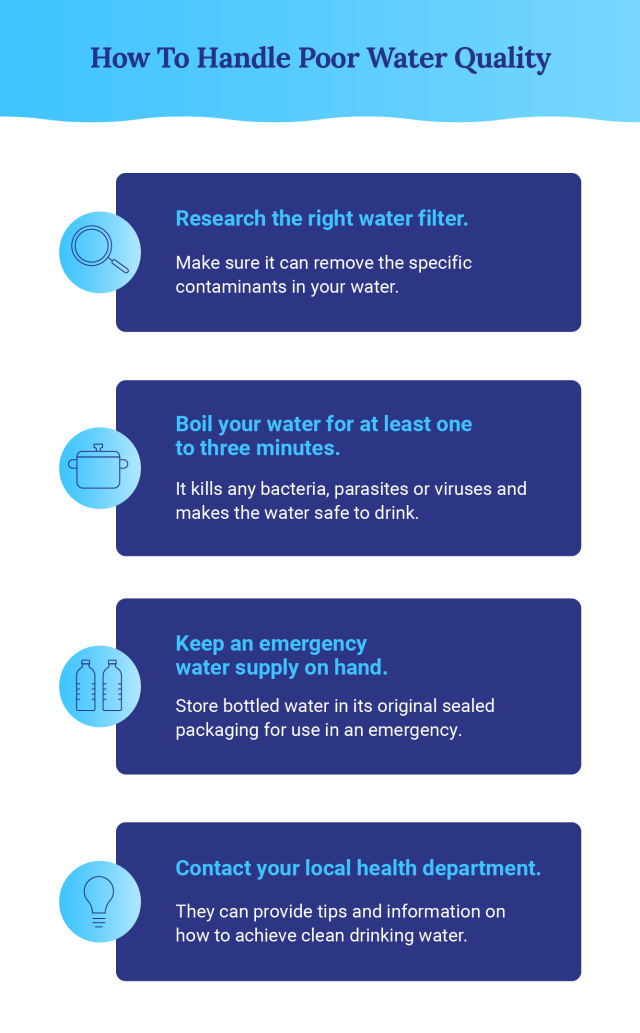
Testing your water can empower you to protect your family from the environmental threat of water contamination. Additional healthy water tips can be found in this visual guide.
8 Cited Research Articles
Consumernotice.org adheres to the highest ethical standards for content production and references only credible sources of information, including government reports, interviews with experts, highly regarded nonprofit organizations, peer-reviewed journals, court records and academic organizations. You can learn more about our dedication to relevance, accuracy and transparency by reading our editorial policy.
- CDC. (2023, February 23). Drinking Water Frequently Asked Questions (FAQs). Retrieved from https://www.cdc.gov/healthywater/drinking/drinking-water-faq.html
- Winfield, S. (2023, February 20). Well Water vs. City Water Pros & Cons Comparison. Retrieved from https://waterdefense.org/water/well/well-water-vs-city-water-pros-cons-comparison/
- EPA. (2023, January 27). Basic Information about Lead in Drinking Water. Retrieved from https://www.epa.gov/ground-water-and-drinking-water/basic-information-about-lead-drinking-water
- California State Water Board. (2023). Water Quality Testing. Retrieved from https://mywaterquality.ca.gov/safe_to_drink/water_quality_testing/
- EPA. (2022, November 15). Information about Public Water Systems. Retrieved from https://www.epa.gov/dwreginfo/information-about-public-water-systems
- EPA. (2022, September 20). Drinking Water Regulations. Retrieved from https://www.epa.gov/dwreginfo/drinking-water-regulations
- EPA. (2022, May 26). Private Drinking Water Wells. Retrieved from https://www.epa.gov/privatewells
- Bendix, A. (2019, May 7). 8 signs your tap water might be dangerous to drink. Retrieved from https://www.businessinsider.com/signs-tap-water-contaminated-unsafe-2019-5
Calling this number connects you with a Consumer Notice, LLC representative. We will direct you to one of our trusted legal partners for a free case review.
Consumer Notice, LLC's trusted legal partners support the organization's mission to keep people safe from dangerous drugs and medical devices. For more information, visit our partners page.
844-420-1914
